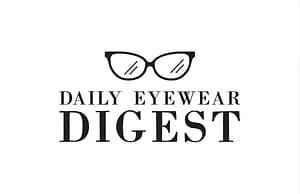The idea of eyewear that can track and interpret emotions sounds straight out of science fiction. However, advances in sensor technology, artificial intelligence, and wearable design have moved emotion-tracking glasses closer to reality. With applications in healthcare, marketing, and social settings, these devices may revolutionize how we interact with others and understand ourselves. But is this technology really ready, or does it still have a long way to go?
The Science Behind Emotion-Tracking Eyewear
Emotion-tracking eyewear relies on a combination of sensors, data analysis, and machine learning to interpret emotional states. Here’s how it all comes together:
How Emotion Tracking Works
Advanced eyewear can capture physiological data points such as changes in heart rate, facial muscle movement, pupil dilation, and even skin conductance. These small shifts in physical responses, when analyzed together, can give a snapshot of the wearer’s emotional state.
Types of Data Collected by Emotion-Sensing Eyewear
Emotion-sensing glasses collect and analyze various forms of data:
- Heart Rate and Heart Rate Variability (HRV)
Changes in heart rate can correlate with feelings of stress, excitement, or calm. - Pupil Dilation
When a person experiences strong emotions or focuses intently, their pupils often dilate. Glasses equipped with eye-tracking sensors can capture these changes. - Facial Microexpressions
Subtle, involuntary facial expressions, or “microexpressions,” often reflect genuine emotions. Cameras and sensors can analyze these, helping detect fleeting feelings.
AI and Machine Learning’s Role in Emotional Detection
AI and machine learning algorithms play a critical role by processing vast amounts of data, identifying patterns, and improving accuracy in recognizing emotions. Through these techniques, emotion-tracking eyewear can refine its ability to interpret subtle changes in behavior.
Current Examples of Emotion-Tracking Eyewear
While the concept is still evolving, several companies and research institutions have made strides in developing emotion-tracking eyewear:
- Google Glass and Early Prototypes
Google Glass initially opened the door for smart eyewear. Though it did not include emotion tracking, it showcased the potential of wearable tech. - MoodMe and Affectiva Glasses
MoodMe and Affectiva are pioneering companies working on emotion-detecting software and glasses, particularly for applications in marketing and user experience. - Project Insight by MIT Media Lab
MIT Media Lab has developed experimental prototypes, like Project Insight, designed to detect emotional responses. These projects demonstrate the science and potential of emotion-tracking glasses in real-world scenarios.
Potential Applications of Emotion-Tracking Eyewear
Emotion-tracking glasses open up possibilities across multiple sectors:
- Healthcare and Therapy
Emotion-tracking glasses could aid in mental health care, helping therapists assess patients’ emotional responses in real-time, facilitating better diagnosis and treatment. - Marketing and Customer Insights
In marketing, emotion-tracking glasses can provide real-time feedback on customer reactions, helping companies understand consumer sentiment. - Education and Learning Environments
Teachers could use this technology to gauge student engagement and adjust their teaching methods accordingly, fostering a more responsive learning environment. - Social Interactions and Empathy
For individuals with social or emotional recognition challenges, such as those with autism, these glasses may help interpret social cues more effectively.
Ethical Considerations and Privacy Concerns
As with any technology that collects personal data, especially data as intimate as emotional responses, ethical and privacy concerns must be addressed:
- Privacy Risks of Emotion Data Collection
The personal nature of emotional data raises questions about how this information will be stored, shared, and protected from misuse. - Emotional Data Security and Storage
Emotion-tracking devices must implement robust data encryption to ensure user privacy and prevent potential breaches. - Informed Consent and Transparency
Companies must provide clear, accessible information on how emotion-tracking data will be used and require user consent before collecting sensitive information.
Technological Limitations and Challenges
While the potential is exciting, emotion-tracking eyewear still faces limitations:
- Accuracy and Reliability of Emotion Detection
Accurately reading emotions remains a challenge due to variations in how people express feelings physically. - Battery Life and Usability
Incorporating powerful sensors and processors can drain battery life, impacting usability. - Integration with Everyday Eyewear
Designing emotion-tracking tech that is unobtrusive and comfortable remains a top challenge for engineers.
Future of Emotion-Tracking Eyewear: Hopes and Predictions
The future of emotion-tracking eyewear looks promising as technology advances, potentially integrating with other forms of wearable tech:
- Advancements in AI for Better Emotional Insight
AI developments could lead to more accurate and nuanced emotional detection, making these devices more useful across various applications. - Possible Integration with Augmented Reality (AR)
Combining AR and emotion-tracking technology could create immersive experiences that respond to users’ emotional states in real-time. - Personalized Emotional Wellness Tracking
Emotion-tracking eyewear could someday offer mental health insights directly to the user, alerting them to trends in mood or stress levels.
Public Perception: Are People Ready for Emotion-Tracking Glasses?
Despite the potential benefits, public reaction to emotion-tracking technology remains mixed.
- Concerns about Privacy and “Mind Reading” Technology
Many people worry about the ethical implications and feel wary about devices that interpret emotions, fearing misuse or invasive surveillance. - Interest in Mental Health Applications
However, surveys show that a substantial percentage of consumers see value in emotion-tracking glasses for mental health and personal insight applications.
Frequently Asked Questions (FAQs)
- Can eyewear really track emotions accurately?
While it can detect physiological cues, interpreting them accurately as emotions is still an evolving field. - Is emotion-tracking technology safe and secure?
Security measures are in development, but users should be aware of potential privacy risks. - How does emotion-tracking eyewear affect privacy?
These devices gather sensitive information, so it’s crucial to use them responsibly and with strong privacy protections. - Are there affordable options for emotion-sensing glasses?
Currently, emotion-tracking glasses are mostly prototypes, but costs may decrease as technology advances. - What fields benefit most from emotion-tracking eyewear?
Healthcare, education, and marketing sectors are leading the way in adopting emotion-tracking technology.
Conclusion
Emotion-tracking eyewear stands at the intersection of science and science fiction. With developments in sensor technology, AI, and data privacy, these devices hold transformative potential. However, challenges remain in accuracy, ethical use, and public acceptance. As the field grows, emotion-tracking glasses may become a valuable tool for personal insight, mental health support, and more, bringing us closer to a future where technology helps us understand human emotions in unprecedented ways.

